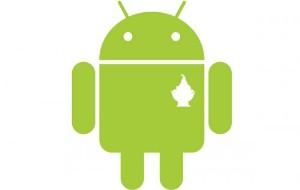Part Two of a five-part series, "Top 5 ways for Android to close the gap." See also:
1. Get Another Killer Phone to Market
3. Get Nexus One into the Stores

Fragmentation is an issue on the Android platform. While some (many?) consumers don't know and don't care if their device runs version 1.6 or 2.1 of the operating system, they are starting to care about features like HTML 5 support that only run on Android 2.0 and higher. The more savvy/conscious Android owners out there, on the other hand, are keenly aware of the waiting game involved with Android OS upgrades. Droid users and Motorola Android fans in general have been following with great interest the official Moto Web page, which was just revised again with status updates ranging from "Upgrade under evaluation" to "Rolling out in stages," depending on your device and carrier.
The madness has to stop, and I keep hearing that OS 2.2 (Codename: FroYo) is going to "take a serious shot"* at putting an end to it at last. I sure hope so.
It's one thing to offer different phones with different specs and features at different price points. It's entirely another to sell "Android" phones marketed as "Android" phones that actually run four different versions of the OS (1.5, 1.6, 2.0 or 2.1), each of which may or may not be upgradable to the current iteration of the platform at some unspecified point in the future. Note the word "current" in the sentence above. We all know that consumer technology is a game of planned obsolescence, but it's still rare to buy a "Version 1.0" form of a gadget that's also available in "Version 2.0" without first knowing whether or not you'll be able to upgrade to 2.0, and roughly when. Sure, we all know our phones will be "obsolete" at some point, but if the next version OS is already out on other phones, I think consumers deserve to know what their upgrade path will be before signing a two-year service contract.
And yet, that's more or less been the deal with Android phones: Buyers have been playing a guessing game as to which phones will see a clear 2.1 upgrade path, and when. It's too unclear and sales are suffering for it. Heck, Apple may have teed a lot of iPhone 3G owners off last week in stating that they'll miss out on some features in the coming OS 4.0, but at least Apple said it. I get that upgrades are more complicated for Google since they're dealing with one operating system that's tweaked and customized to run on dozens of different pieces of hardware and carriers. But still, enough with the fragmentation and consumer guessing games: Bring on the FroYo and, with it, at least a clearer idea of which phones will and won't be compatible with which features and versions already in the marketplace.
*For more, see Chris Ziegler's post-CTIA report on FroYo and the possible end to fragmentation over at Engadget.